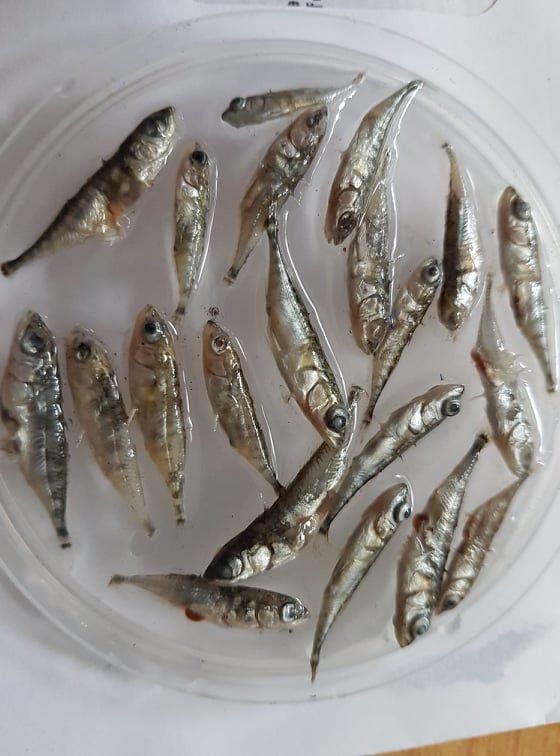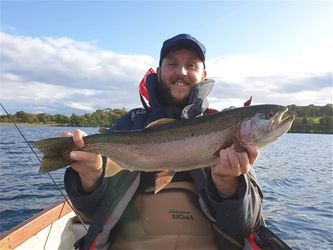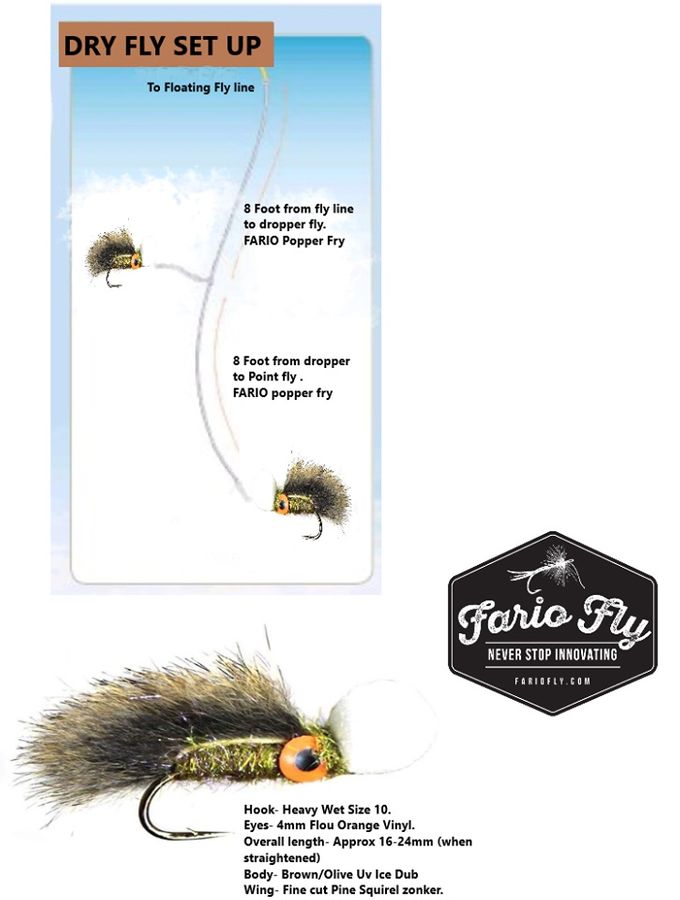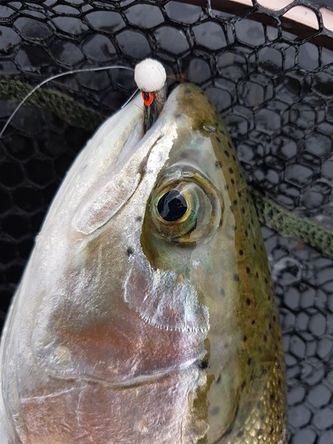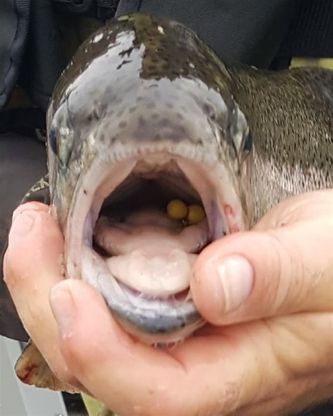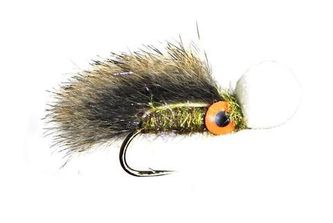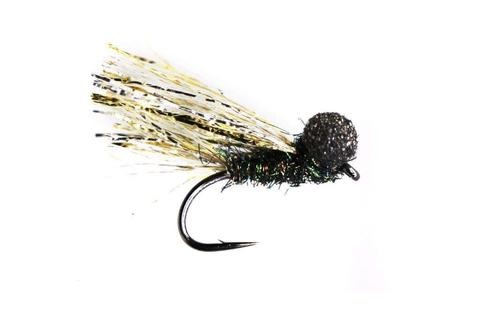FRY TIME
FRY BASHERS
This subjest always crops up at this time of year as the vast shoals of fry in the lakes get corralled by hungry trout. Most lakes have some coarse fish in them and by late September into October the roach and rudd fry can reach up to 3 inches in lenght. The trout hunt the fry as insect life diminishes as the fry are a great source of protein for the fish as the trout need to pack on the weight for the lean months ahead.
But on other lakes coarse fish are not as prevalent and are a little harder to catch than the humble stickleback. Sticklebacks are not talked about much when fishing for fry feeders. The sticklebacks are slower and seem to be easier for the trout to hunt, on some of the midland Lakes of Ireland there are vast quantitys of sticklebacks and the fishing can be great.
There are a number of ways to target these fry feeders , but there is none more exciting than fishing floating fry patterns
Location is the Key
When looking for fry feeders there are a few main things i look for, drop offs or ledges and weed, If you get the two combined, the stickleback will be present and the trout will not be too far behind.
All through September and into October the trout will hunt the sticklebacks, but this year the trout in my local lakes went on the fry mid July. Fish would pitch several times in the one spot, crashing through the fry and stunning them. These fish would then slowly swim around taking stunned stickleback as they went.
On windy days the trout would herd the stickleback onto the top of the shelves or onto the top of isolated weed beds in deep water where they would commence their assault. But on calmer days the trout would force the prey into balls anywhere out in the lake and then attack them. Just like Tuna and Marlin do on the wild life programs that we all look at.
I prefer fishing the former as you can repeat drifts you know are right as you can line the structure up to drift onto. When the trout are bashing fry in deep water, once they attack a shoal they will disperse the rest of the shoal and after feeding on the stunned fish they will have to ball the sticklebacks up again. This could take place a 100 yards or more from the previous attack. You always have to watch for trout pitching out of the water and then drive the boat towards the commotion, hopefully reaching them befores the onslaught ends.
If the fish are actively feeding i will set up a cast with two popper fry on a floating line as described in the photo above. Casting towards the feeding fish i let the flys rest on the water and then pop them a few times with a couple of quick pulls on the floating line. The flies causes quite a disturbance on the water and will get any trout in the vicinity to investigate the easy meal. If a fish does not investigate after 20 seconds i will repaet the process , but i will only do that on windy days. If it is calm i will cast out and pop the flies twice and leave them sit as the fish are much slower gathering up the fry in calm conditions.
Booby Time
Unfortunately the trout do not feed at the surface all day . The best top of the water action is either early in the morning or in the evening. But the fish will accept fry patterns throughout the day using sinking lines, the sport can be great too, but not as exciting taking fish off the top.
During quiet spells of surface activity, fishing a three fly cast with two boobys , top and tail with a fry pattern like a 12 silver dabbler, cormorant or diawl bach in the middle on a slow intermediate to a di 5 can work wonders.
Fishing drop offs and deep water with weed present are the areas i like to fish. But fishing slowly is the key for the fishing i do. Casting out, two quick strips to starighten the line, to make sure your in contact with you flies before a slow figutre of eight is employed. The takes can be out of the world. Complete rod wrenchers. Please dont forget the hang at the end of every cast, as the trout will follow all the way to the boat before deciding to take your fly.
Lough Lene
As i said earlier, from July till the end of the season Lough Lene gave great sport to fry patterns, unfortunately i was away fishing other competitions at the time. But i did get in some stickleback fishing right at the end of the season. Fry feeders come in all sizes and shapes, from recently stocked fish to overwintered fully finned specimens.
Two competitions at the end of the season prooved that this was the method of finding the bigger overwintered fish, yes you had to go through a few fish to the get the specimens but you will get them. John Maguire and i fished the Chairmans Pairs competition on Lough Lene, John caught a lovely Rainbow of nearly 6lb that took a Booby off the top to win the competition for us as it was heaviest fish weigh in. The following week i was with Peter Doherty in the North Kildare Competition again on Lough lene. Employing similar tactics we came out 1st and 2nd and had the largest fish of the day too. A lovely way to end a season.
Boobys are not just for rainbows, for years now Boobys have been employed to catch browns and quite big ones at that. But they are definately a fly at the fore front of my armoury when the trout are on fry at the back end of the season.
If you dont tie you can get all the patterns mentioned in the article from Fario Flys. And if you do tie, you could get a few of the patterns and copy them.
Winter is approaching and with it the AWOL Winter league.An experience in itself.
Till next time take care and tight lines.
Latest comments
19.05 | 05:47
Hi Denis
Good meeting last night, and enjoyed reading your blog. Felt I was on the lake with you. Great work
02.05 | 20:42
Hi Dennis loved the article straight to the point .just wondered will the trout feed on the small buzzers all year ?
06.04 | 11:57
Cant wait to read this
01.03 | 03:03
glad u enjoy, ty, will be back when the fishing returns
Share this page
